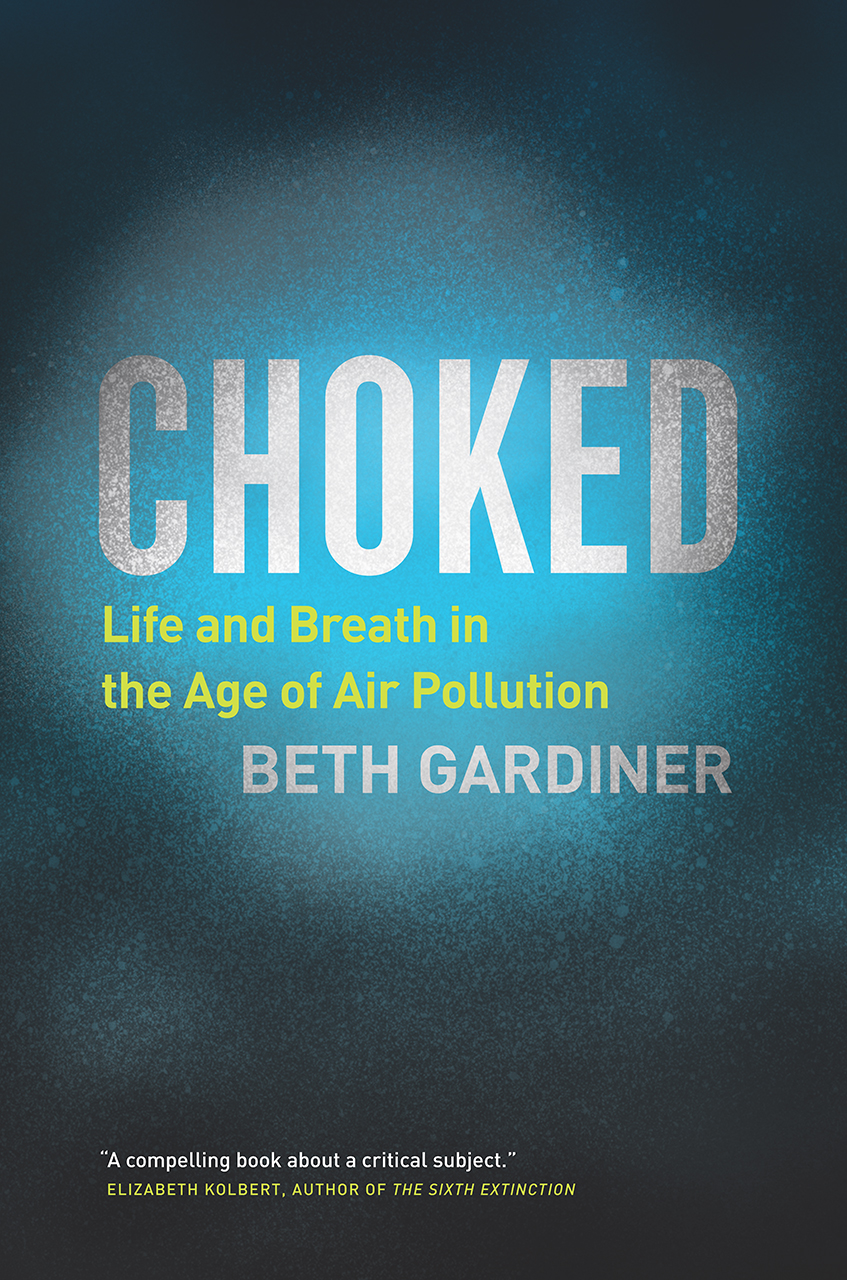In a hearing last month, a top science panel at the Environmental Protection Agency questioned the long-established connection between air pollution and early deaths. The Clean Air Scientific Advisory Committee was gathered to discuss potential changes to the way the agency considers research on the public-health effects of air pollutants, and of particulate matter especially—the microscopic pieces of soot, smoke, and other airborne particles that are small enough to enter the bloodstream through the lungs.
As the EPA works to revise our national air quality standards—which impose evidence-based limits on six airborne pollutants that harm human health, including lead, ozone, and particulate pollution—the committee is considering new rules that would limit the kinds of scientific studies that the EPA can consider when evaluating the link between air pollution and health. At last month’s hearing, Committee Chair Anthony Cox claimed to be “actually appalled” by what he alleged was a lack of scientific evidence linking particulate pollution to negative health effects and mortality.
Never mind that the EPA’s own website states that “numerous scientific studies have linked particle pollution exposure to a variety of problems,” including respiratory symptoms, asthma, heart attacks, and, yes, premature death. Further, nearly everyone on Earth is affected by poor air quality: Today, only 5 percent of us breathe “truly healthful air,” as journalist Beth Gardiner writes in Choked: Life and Breath in the Age of Air Pollution, an essential book that manages to trace decades of scientific research and legislative jockeying while offering vivid commentary on the dire consequences of air pollution for humans.

(Photo: University of Chicago Press)
For Choked, Gardiner embarked on a world tour to find out how cities in China, India, the United States, and the United Kingdom have turned into some of the most polluted places on the planet, and she’s returned with stories about the hard-fought changes that are helping to clean up the atmosphere. Gardiner also wants to warn readers about another emerging threat to clean, healthy air: complacency.
For hundreds of years, Gardiner writes, smoke laced with pollutants such as sulfur, nitrous oxides, lead, and carbon dioxide poured from our chimneys, our smokestacks, and our tailpipes unabated, creating toxic rains and deadly fogs that still settle over cities from Los Angeles to London to Beijing. In 1943, Los Angeles was enveloped with a cloud of smog so foul that some thought it was a chemical attack by the Japanese; a few years later, a toxic haze from a zinc factory in Pennsylvania took 20 lives and sickened thousands more; and for five days in 1952, London was cloaked in a “Great Smog” that killed some 12,000 people.
Only once the air had become undeniably deadly did politicians around the world begin to take action, urging industries to clean up their acts and, in the process, our air. U.S. politicians began targeting air pollution with legislation in the 1950s and ’60s, but they enjoyed little success, Gardiner notes, until the Clean Air Act of 1970. Industry leaders had effectively defanged early clean-air laws by claiming that too much regulation would drive companies out of business. What set the 1970 act apart from its predecessors was a focus on public health over industry interests.
“From now on, public health would be the sole factor used to determine how much pollution was allowed in the air,” Gardiner writes. “That reframing—the decision to put Americans’ health above companies’ profits—was the beating heart of the bill, the fundamental reordering of priorities that would invest this new Clean Air Act with a power its predecessors had lacked.” Faced with a legislative mandate, industries managed to innovate and meet the demands of the Clean Air Act without descending into financial ruin, and slowly the air began to clear.
Just 20 years after the act was signed into law, carbon monoxide levels were roughly 50 percent below what they would have been, and particle pollution was down 45 percent. A government analysis found that, in 1990 alone, the law saved some 200,000 lives. It worked so well that, today, industry’s most ardent supporters now question whether it was ever necessary at all.
As Gardiner warns: “The Clean Air Act may be at risk of succumbing to its own success.”

(Photo: Courtesy of Beth Gardiner)
The air in many major cities is certainly much cleaner today than it was just a few decades ago. But just because it doesn’t always burn our throats and sting our eyes doesn’t mean pollutants aren’t still wreaking havoc inside our bodies. In chapter three of Choked, which chronicles the U.K.’s ill-fated push for residents to adopt diesel engines, Gardiner highlights the work of King’s College Professor Frank Kelly, which pinpointed the effects of diesel exhaust inside the body. Kelly exposed volunteers to levels of diesel fumes they might have encountered on London streets, and then looked at tissue examples from their lungs. He found that the body’s immune system responded to the toxic soot particles and fumes as if they were a microbial threat, sending immune cells to fight off the invaders. But the body’s immune cells are not equipped to fight off pollution, so they turn against the cells of the lung itself, leading to inflammation and reduced lung function.
Decades of research have shown that, when air quality plummets, heart attacks, strokes, and emergency room visits spike. Air pollution causes our arteries to constrict within minutes of exposure, and over time can lead them to calcify. It’s been linked to asthma, memory loss, and lowered IQs. The World Health Organization classifies it as a carcinogen. All told, researchers estimate that air pollution causes some seven million early deaths around the world every year—more than alcohol, obesity, AIDS, or even smoking.
It can be hard to quantify exactly how deadly air pollution is because it’s not a direct cause of death so much as a risk factor—more akin to obesity or smoking than to a heart attack or a stroke. But just as scientists have shown that obesity and smoking can be bad for human health, public-health researchers have used observational studies and complex statistical modeling to estimate the harm done by air pollution—the kind of studies, in other words, that the EPA under President Donald Trump is considering excluding from its health considerations.
Gardiner calls this kind of scientific uncertainty a “politically loaded concept, easily misunderstood and seized upon as a weakness by those who don’t like scientists’ conclusions.”
The parallels to the debate around climate change are not lost on Gardiner.
“This [weaponization of uncertainty] is most highly charged, of course, around climate change,” she writes. “Those who refuse to acknowledge the overwhelming consensus pounce whenever they hear the word ‘uncertain.’ But being unsure whether this century’s sea level rise will be three feet or six feet does not mean the seas aren’t rising, or the climate’s not changing. The same goes for air pollution.”
One of the main lessons from Choked is that governments do have the power to rein in polluters, whether their emissions are harming human health or the planet’s, or both. The question is whether or not officials have the will to stand up to industry.
As rhetoric from skeptics like the EPA’s Cox shows us, when the smog clears, it’s all too easy to ignore the links between poor air quality and its corrosive effects on public health. But as our air quality has improved, the threshold at which air pollution is known to harm human health has fallen; just a slight drop in air quality can cause significant and lasting damage, according to Gardiner. While air pollution has become less apparent in many places, the consequences of climate change are becoming more visible all the time. Droughts, floods, wildfires, powerful storms, and other extreme weather events are becoming more frequent and more intense. And as Choked so compellingly argues, it often takes extreme circumstances to bring about radical change.
Gardiner, for one, is optimistic that humanity can solve the two crises—air pollution and climate change—by tackling their shared cause: fossil fuels. “Ending millions of lives every year and blighting many more, air pollution is cause enough for action,” Gardiner writes. “But the imperative of confronting climate change means something even bigger is at stake: our very survival, on a planet capable of supporting us, one where floods don’t drown our biggest cities and drought doesn’t parch the fields that feed us.”

Pacific Standard’s Ideas section is your destination for idea-driven features, voracious culture coverage, sharp opinion, and enlightening conversation. Help us shape our ongoing coverage by responding to a short reader survey.





